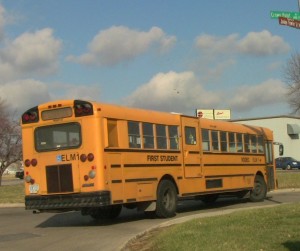Spending more on Virginia students doesn’t mean they’re getting smarter

WHERE ARE THE RESULTS? Spending and school employment has soared over the last four decades, but test scores are stagnant, suggesting that throwing more money at K-12 education won’t fix the problem.
By Kathryn Watson | Watchdog.org, Virginia Bureau
ALEXANDRIA, Va. — More money doesn’t necessarily translate to more successful, college-ready students.
A new study by the Cato Institute, a libertarian think tank in Washington, D.C., finds that, adjusted for inflation, per-pupil spending from 1972 to 2012 has soared 120 percent in Virginia.
But SAT scores have remained virtually stagnant. In fact, when adjusted for participation and demographics, Virginia’s SAT scores actually fell by 3 percent.
Virginia isn’t alone. Nationally, per-pupil spending has increased close to 200 percent, and school employment has increased nearly 100 percent since 1970. Reading and math scores of 17-year-old students on the National Assessment of Educational Progress have remained flat, the study found.
“There has been essentially no correlation between what states have spent on education and their measured academic outcomes,” wrote Andrew Coulson, director of Cato’s Center for Educational Freedom. Coulson conducted the study.
Of course, SAT scores aren’t everything. But Cato researchers argued the SAT is a mark of how well-read a student may be and whether he can think critically.
“While SAT scores are not a comprehensive metric of educational outcomes, the SAT measures reading comprehension and mathematical skills that are intrinsically useful,” Coulson wrote.
Delegate Steve Landes, chairman of Virginia’s House Education Committee, said it “does look as if both nationally and in Virginia student achievement is relatively flat in comparison with both state and local funds invested in K-12 education that have increased significantly over the same period. That is disappointing, and we will need to look at the study and results very carefully as we move forward in developing and reforming Virginia’s K-12 education system.”
International testing backs up that lack of correlation between more spending and success in critical cognitive areas.
The U.S. spends more per pupil than almost any nation, yet the U.S. was a miserable 36th in math, 28th in science and 24th in reading, according to the 2012 PISA assessment, ranking below countries such as Slovakia, Latvia and the Czech Republic.
It’s not news to Kara Kerwin, president of the Center for Education Reform, that more spending doesn’t equal better success.
“The conventional thought is if we just throw more money at the program we will fix it and things eventually get better,” Kerwin told Watchdog.org on Wednesday.
What matters more than spending are parent empowerment, choice and competition, Kerwin said, who added that charter schools provide the best example.
“Charter schools see about 30 percent less funding than public schools, and yet they’re doing so much more with less,” Kerwin said. “And so, the establishment finds that threatening.”
The problem isn’t money. Rather, it’s that traditional public schools lack empowerment, choice and competition.
That’s why charters are outperforming their public school counterparts — charters are renewed annually on a performance basis, and they compete with public schools for students and success.
Competition from charters naturally challenges traditional public schools, Kerwin said.
Charters are just one piece of the school-choice puzzle, but they’re a big one. And once again, Virginia scored an F in the Center for Education Reform’s 15th annual ranking of state charter school laws, released this week.
With just one independent authorizer that can establish charter schools in Virginia, and just six charters, Virginia shares a failing grade with only Kansas and Iowa.
“I think the most important thing in Virginia and what has plagued the charter school sector is the fact that school boards think they have exclusive authority over education,” Kerwin said. “… Making a charter school have to go to a local school board is the equivalent of McDonald’s asking a Burger King to open.”
It’s exactly the kind of scenario Virginians have seen played out in battles like the one between the Fairfax County Public School Board and the Fairfax Leadership Academy, a proposed charter school for at-risk students that got a hearty endorsement from the State Board of Education. The local school board ultimately killed the project, and charter hopefuls had nowhere to turn.
States that thrive are those in which many groups can authorize charter schools, such as respected universities, Kerwin said.
Virginia doesn’t have to languish at the back of the pack in CER’s report forever, Kerwin said.
All it takes is one lawmaker — with the guts to stand up for choice and accountability — to file a bill that paves the way for more authorizers. That, Kerwin said, is the most important step Virginia can take to nurture student success with fewer dollars.
Kathryn Watson is an investigative reporter for Watchdog.org’s Virginia Bureau, and can be reached at kwatson@watchdog.org, or on Twitter @kathrynw5.
The post Spending more on Virginia students doesn’t mean they’re getting smarter appeared first on Watchdog.org.







